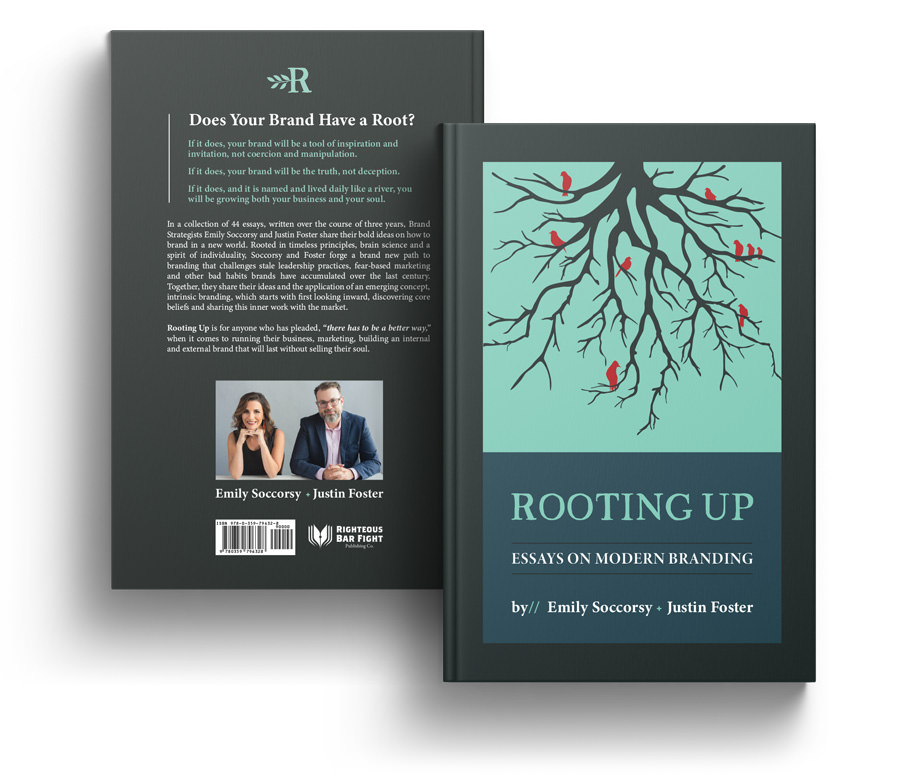Filed Under: Beliefs-Based Branding, Humanistic Marketing
Unless you intentionally live in a self-created bubble, everyone and everything is trying to get your attention at all times.
Therefore, we don’t give our attention for any length of time to just anything. Our attention must be earned.
It’s something we call attention curation, and it works two ways.
For individuals, attention curation is the disciplined practice of consciously filtering inputs and distractions to achieve a desired state of presence. (More on this in another post to come…)
For brands, attention curation is carefully selecting, organizing and presenting stories and images that honor the value of an audience’s notice and concentration.
If you are a marketer, you must face up to this blunt truth about attention: The market does not have to pay attention to you. In fact, it’s more effective for you to adopt the idea that the market does not want to and does have a proclivity to pay attention to you.
The science of attention reveals that humans can only give their focus to one thing at a time. And when there are millions of “one things,” that attention gets scattered. The brain treats this as a threat and begins to quickly catalog things that have similar patterns. It’s not cataloging them to make a decision later. It’s cataloging them to ignore them to focus on other matters.
This reveals an inherent flaw in advertising logic: the idea that impressions equal attention. Filtering ads, banners, billboards, still provide impressions, but not necessarily attention, particularly if the messages and visuals on those ads, banners or billboards are bland. If you look the same, sound the same, feel the same, you are getting seen, but ignored. This reality is why there is so much desperation in advertising. Desperate to secure higher impression numbers, advertisers conjure the bizarre and outright odd — such as an emu trying to sell insurance.
And yet, for the most part, the most powerful tendency we have is to say the same, safe thing, perhaps slightly differently.
But “slightly different” will also be filtered out as part of the brain’s pattern recognition process.
Being truly, boldly different disrupts the pattern recognition and captures genuine attention.
The art of capturing attention is the practice of consistent, authentic and radical differentiation. This is why we call branding an art; a practice. It is showing up in every experience and every moment with compelling visuals, heartfelt language, compelling offerings.
So where do you begin? How can you practice attention curation as a brand?
This is where data comes in.
Use your marketing data to uncover where you have successfully earned the attention of your audience in the past. Perhaps it was a blog post from your CEO in the wake of the COVID-19 outbreak. Maybe it was a social media post that was shared or commented on. Don’t just see these data points as successful conversions or interactions, but as moments when you earned the attention — and trust of your audience.
Examine the content and the context of the data high point. Was it timely? Did you tell a story? What medium was used? The story the data is telling about what was so interesting and engaging to your audience also conveys the level of attention curation.
For brands, the practice of attention curation is not a manipulative way to attract new eyeballs. It is to be practiced so that the brand can convey its beliefs, standards and mission to its audience, while expressing itself in novel ways for existing audiences — employees, customers, media.
WE BELIEVE BEING ALWAYS COMES BEFORE DOING. ARE YOU THE HEAD OF MARKETING FOR YOUR BRAND OR YOUR ORGANIZATION? A SENTIENT BEING WHO IS ALSO THE TOWN CRIER FOR YOUR BRAND?
We invite you to join our free, private community Being Marketers. Inside of Being Marketers you will find a space to help you harmonize between your marketing work and your soul. You’ll have access to full videos from our Being Marketers webcasts, customized content and tools and be the first to learn about our upcoming webcasts, private events and offerings.
